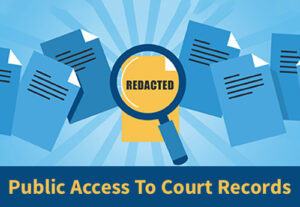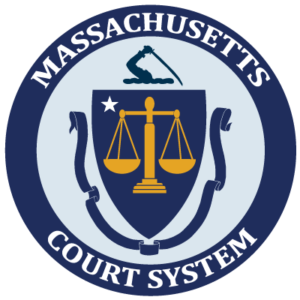What Does the Supreme Court Do?
What is the job of the Supreme Court?
The Supreme Court of the United States occupies a unique and vital role in the American political system. As the highest court in the land, the Supreme Court has the final say on matters of constitutional interpretation and federal law. But what exactly are the roles and responsibilities of the Supreme Court? In this article, we’ll examine the origins, composition, powers, and overall job of the Supreme Court. Gaining an understanding of what the Supreme Court does provides important insight into how our government functions.
History and origins of the Supreme Court
Established by the Constitution
The Supreme Court was established by Article III of the U.S. Constitution, which vests judicial authority “in one supreme Court.” The Constitution granted the Supreme Court original jurisdiction in certain cases and appellate jurisdiction over cases involving the Constitution and federal law. This paved the way for the Supreme Court to become the highest level of appeal in the American judicial system.
First Supreme Court in 1789
The first Supreme Court convened in 1789 after the ratification of the Constitution. It was made up of six justices who met in New York City. The Judiciary Act of 1789 further shaped the Court by establishing circuit courts and federal district courts under the Supreme Court. Over time, the size of the Supreme Court has changed, but its powers come directly from Article III of the Constitution.
Composition of the Supreme Court
Nine justices
Today, the Supreme Court is composed of a Chief Justice and eight associate justices, for a total of nine members. Having an odd number avoids potential tie decisions from the Court. The number of justices has fluctuated between six and ten at various points in history before settling at nine in 1869.
Current Justices of the U.S. Supreme Court
As of the latest update, the composition of the U.S. Supreme Court is as follows:
- Chief Justice of the United States: John G. Roberts, Jr.
- Associate Justices:
- Clarence Thomas
- Samuel A. Alito, Jr.
- Sonia Sotomayor
- Elena Kagan
- Neil M. Gorsuch
- Brett M. Kavanaugh
- Amy Coney Barrett
- Ketanji Brown Jackson
Additionally, the following are retired Justices:
- Sandra Day O’Connor
- Anthony M. Kennedy
- David H. Souter
- Stephen G. Breyer
Appointed for life by the president
Supreme Court justices do not have set terms. They effectively hold their office for life, unless they resign, retire, or are impeached and removed by Congress. Justices are appointed by the president and then confirmed by the Senate. This lifetime tenure helps insulate justices from political pressures when deciding cases.
Senate confirmation required
Under the Constitution’s Appointments Clause, Supreme Court nominations must be confirmed by the Senate. This provides an important check on the president’s appointment powers. Nominees testify before the Senate Judiciary Committee before the full Senate votes on confirmation.
Jurisdiction and powers of the Supreme Court
Original and appellate jurisdiction
The Constitution grants the Supreme Court both original and appellate jurisdiction. In original cases, the Court has initial authority to hear and decide the case. Appellate cases involve reviewing decisions already made by lower courts. Most of the Court’s work is focused on appellate review.
Judicial review
A major power is judicial review, or determining if laws passed by Congress and actions taken by the executive branch are constitutional. The famous 1803 case of Marbury v. Madison established the Supreme Court’s judicial review authority. Through this power, the Court can invalidate unconstitutional laws.
what are the duties of the supreme court
what is the purpose of the supreme court
The Supreme Court of a country, such as the United States, has several important duties and responsibilities, which generally include:
Interpreting the Constitution
A primary responsibility is serving as the final interpreter of Constitutional meaning. Justices examine the text of the Constitution, intent of the Framers, historical practices, and precedents when making determinations regarding constitutional questions.
Reviewing Lower Court Decisions
The Supreme Court acts as an appellate court, reviewing decisions made by lower federal courts and state supreme courts. This process ensures uniformity in the application of federal law.
Setting Legal Precedents
Through its decisions, the Supreme Court establishes legal precedents. These precedents guide lower courts in future cases and help maintain consistency in legal interpretation.
Resolving Disputes between States
In cases involving disputes between states, the Supreme Court has original jurisdiction. It plays a vital role in settling interstate conflicts.
Advising the President
The President may seek the Supreme Court’s advice on legal matters. While non-binding, this consultation can influence presidential decisions.
Ensuring Constitutional Rights
The Court protects individual liberties by reviewing laws and government actions to ensure they comply with the Constitution.
Protecting Minority Rights
One of the Court’s duties is safeguarding the rights of minorities, even when public opinion may be against them.
Judicial Review
The concept of judicial review allows the Court to declare laws unconstitutional if they violate the Constitution’s principles.
Chief Justice and Associate Justices
The Supreme Court consists of a Chief Justice and eight Associate Justices, each with equal voting power.
Oral Arguments and Written Opinions
Cases brought before the Court involve oral arguments and written opinions, providing clarity on the Court’s reasoning.
Public Influence
Supreme Court decisions can have a profound impact on society, influencing civil rights, social issues, and government policy.
Checks and Balances
The Court is a key component of the system of checks and balances, ensuring no single branch of government becomes too powerful.
Limitations of the Supreme Court
Despite its significance, the Supreme Court has limitations, such as its inability to enforce its decisions.
Major roles and responsibilities of Supreme Court
Deciding federal cases
After oral arguments, the justices meet in private to discuss, debate, and vote on the cases before them. Decisions on constitutional matters require a majority vote. The Court’s written opinions explain its rulings and legal reasoning on each case.
Determining constitutionality of laws
A major responsibility is deciding if federal or state laws adhere to the Constitution. The Court can uphold or strike down statutes passed by legislative bodies based on their consistency with constitutional principles.
Setting precedents
Supreme Court decisions often set precedents that become the basis for determining future cases. The Court generally respects the legal principle of stare decisis and only overrules precedent under compelling circumstances.
Impact and significance of Supreme Court decisions
Landmark rulings throughout history
Many monumental Supreme Court cases have become fixtures in American legal theory and practice. These include Marbury v. Madison on judicial review, Brown v. Board of Education on desegregation, Roe v. Wade on abortion rights, and more.
Influences politics, society, economy
The Court has made decisive rulings shaping American policy and discourse on voting rights, interstate commerce, due process, civil rights, First Amendment freedoms, criminal justice, and other vital spheres.
Checks and balances on other branches
By determining the constitutionality of laws and actions, the Supreme Court maintains fundamental checks and balances between the branches of government. This helps prevent overreach or abuse of power.
Controversies and criticisms of the Supreme Court
Lifetime appointments
Life tenure for justices raises concerns about how to ensure accountability. Some argue term limits would be fairer and allow each president to nominate new members.
Partisan divides and ideological leanings
Critics say justices frequently vote along partisan lines and bring ideological biases to cases before them, rather than objective appraisals of the law. The nomination process has grown increasingly politicized.
Judicial activism vs. restraint
There are debates around whether the Court should actively shape policy (judicial activism) or use restraint by deferring to the elected branches (judicial restraint). Justices often grapple with this issue.
Conclusion
The Supreme Court holds great power in our constitutional system. It originated with the Constitution and today consists of nine members who serve lifetime appointments. The Court acts as the final arbiter of federal law and the meaning of the Constitution. Through exercising judicial review and upholding precedent, it has profoundly shaped life and policy in America.
Importance of an independent judiciary
While not without controversy, the Supreme Court remains essential to rule of law. Its independence from electoral pressures and politics allows it to preserve constitutional rights in the face of shifting public sentiment. Maintaining this separation of powers remains critical.
FAQs
Q: How many justices are on the Supreme Court?
A: There are nine justices on the Supreme Court – one Chief Justice and eight associate justices.
Q: Who nominates Supreme Court justices?
A: The president of the United States nominates justices to the Supreme Court when vacancies arise.
Q: Can Supreme Court decisions be overturned?
A: Supreme Court decisions can be overturned in several ways, including by a Constitutional amendment overriding the decision or if the Court overrules itself in a future case and reverses precedent.
Q: Where does the Supreme Court get its power?
A: The Supreme Court gets its power from Article III of the Constitution, which established the judicial branch and vested federal judicial power in the Supreme Court.
Q: How long do Supreme Court justices serve?
A: Supreme Court justices effectively have lifetime tenure and serve until they resign, retire, are impeached, or die. There are no term limits for justices.








